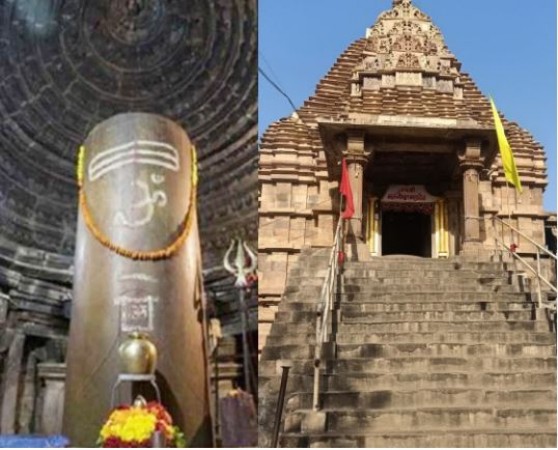
Matangeshwar temple is the famous Madhya Pradesh temple and is the ninth century temple. The temple is dedicated to Lord Shiva. The temple was built by the Chandra Dev of Chandela dynasty. Lord Shiva is considered as the venerated sage Matang and hence the name Matangeswarar. It is the largest lingam in India which is eight feet long.
Matangeshwar Temple stands as a proud testament to the architectural brilliance and religious fervor of ancient India. This temple, dedicated to Lord Shiva, holds a prominent place in the religious and cultural landscape of the region and attracts devotees and tourists alike.
Also Read: Kal Bhairav: Powerful Guardian and Protector
The Matangeshwar Temple finds its roots in the ancient city of Khajuraho, which flourished between the 9th and 12th centuries under the Chandela dynasty. This temple, like the other famous temples in Khajuraho, was constructed during the reign of King Yashovarman, who ruled over the region during its golden era. The Chandela kings were known for their patronage of art and architecture, and the temple construction during their reign stands as a testament to their architectural achievements.
The Matangeshwar Temple exemplifies the Nagara-style architecture, a prominent style in Northern India during that era. Standing on a high platform, the temple is built using a combination of sandstone blocks and intricately carved sculptures. Its impressive spire, or shikhara, raises high into the sky, making it a striking landmark amidst the Khajuraho temple complex.
Also Read: Vamana Temple: Architectural Prowess of Ancient India
The temple's facade is adorned with exquisite carvings, depicting various mythological and celestial beings. The outer walls showcase intricate sculptures of apsaras, nymphs, musicians, and celestial dancers, all contributing to the temple's aesthetic allure. The skillful craftsmanship of the artisans is evident in the level of detail and precision found in each sculpture.
The main sanctum, known as the garbhagriha, houses the lingam, representing Lord Shiva. Devotees enter the sanctum to offer their prayers and seek blessings. The interior walls feature carvings depicting various aspects of Lord Shiva's life, along with scenes from Hindu epics like the Mahabharata and Ramayana.
Also Read: Know the history of Jejuri Garh in Maharashtra
The Matangeshwar Temple holds immense religious significance for Hindus, particularly for followers of Lord Shiva. It is believed that the temple was constructed to honor Matangeshwari, a local deity considered to be a form of Goddess Parvati. The name "Matangeshwar" is derived from the words "Matanga" (elephant) and "Ishwar" (God), referring to the deity who took the form of an elephant to worship Lord Shiva.
Devotees flock to the temple during the annual festival of Mahashivaratri, a major Hindu festival dedicated to Lord Shiva. During this auspicious occasion, the temple premises buzz with activity, as pilgrims and tourists from all over the country come to seek the blessings of Lord Shiva.
Also Read: Telika Temple: Architectural Splendor
The Matangeshwar Temple, nestled within the timeless splendor of Khajuraho, stands as an architectural gem that reflects the religious and artistic ingenuity of ancient India. Its rich history, awe-inspiring architecture, and religious significance make it a place of profound reverence and wonder. As the temple continues to be a beacon of spirituality and cultural heritage, it reminds us of the importance of preserving our historical treasures for generations to come. A visit to the Matangeshwar Temple is not only an exploration of a magnificent monument but also a journey through time to connect with the cultural legacy of the past.
Also Read: The Mythological Stories and Symbolism Behind Greek Temples